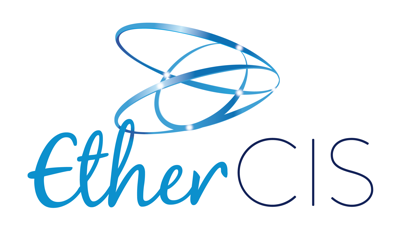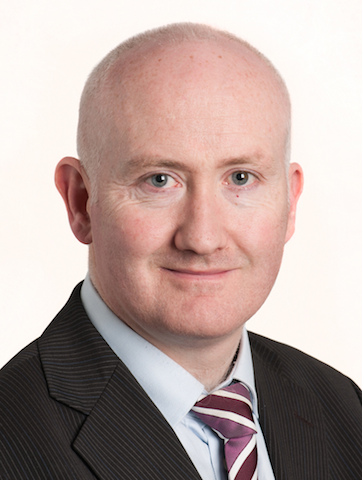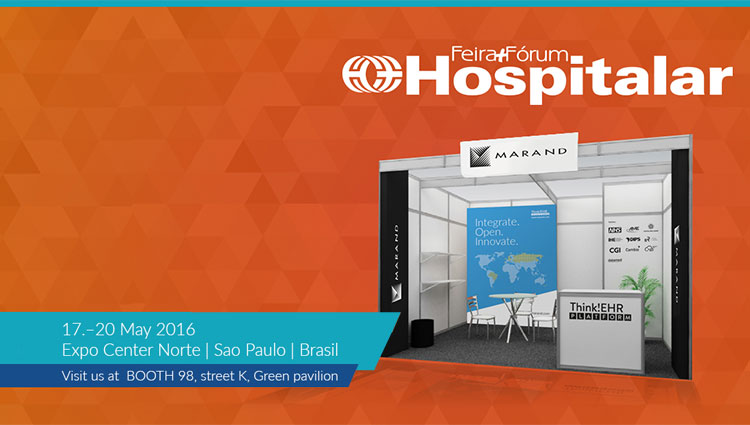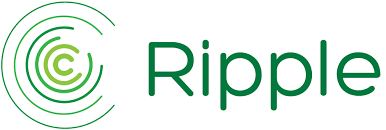openEHR
See the following -
Remote Seats available for HANDI’s SMART Platform & OpenEHR Meeting on July 11
HANDI–the Healthcare App Network for Development and Innovation–will host a meeting on the SMART platform and OpenEHR on Wednesday, July 11. This meeting will include expert presentation of the two technologies and an opportunity to explore their further use in the UK and/or possible collaboration at a global level.
- Login to post comments
Ripple Foundation Launches EtherCIS To The World Of Healthcare
 The world of healthcare can now begin to leverage the power and potential of the EtherCIS Clinical Data Repository. EtherCIS development has been supported by the non profit Ripple Foundation and this leading technology now provides the key foundation of its “showcase stack” and work towards an open platform in healthcare. EtherCIS development is led by Christian Chevalley of ADOC Software Development and the EtherCIS technology is now the leading open source implementation of the openEHR standard in action (including AQL support). The openEHR standard has been adopted and implemented across healthcare systems throughout the world, representing the future of health IT. Read More »
The world of healthcare can now begin to leverage the power and potential of the EtherCIS Clinical Data Repository. EtherCIS development has been supported by the non profit Ripple Foundation and this leading technology now provides the key foundation of its “showcase stack” and work towards an open platform in healthcare. EtherCIS development is led by Christian Chevalley of ADOC Software Development and the EtherCIS technology is now the leading open source implementation of the openEHR standard in action (including AQL support). The openEHR standard has been adopted and implemented across healthcare systems throughout the world, representing the future of health IT. Read More »
- Login to post comments
Ripple: Making Waves in Healthcare IT
 The Ripple Program, based out of Leeds and building upon the lessons learned from the Leeds Care Record, has recently been set up to positively disrupt health and social care towards those ends. Importantly the ethos of “open” is at the heart of the work and for very good reason. It is clear that interoperability between Health IT systems will drive real change but, what is even clearer is that only an open source approach will positively disrupt this health and social care landscape across the NHS and across the globe. Funded by NHS England and hosted by Leeds City Council, the focus of Ripple is to support health and social care organizations by providing six open source elements which can be used individually, in combination or as a whole, and are consistent patterns of need when embarking on an work towards healthcare improvement with information technology.
The Ripple Program, based out of Leeds and building upon the lessons learned from the Leeds Care Record, has recently been set up to positively disrupt health and social care towards those ends. Importantly the ethos of “open” is at the heart of the work and for very good reason. It is clear that interoperability between Health IT systems will drive real change but, what is even clearer is that only an open source approach will positively disrupt this health and social care landscape across the NHS and across the globe. Funded by NHS England and hosted by Leeds City Council, the focus of Ripple is to support health and social care organizations by providing six open source elements which can be used individually, in combination or as a whole, and are consistent patterns of need when embarking on an work towards healthcare improvement with information technology.
- Login to post comments
Safety Net Providers find Benefits & Problems with Open Source
Safety net providers have both succeeded and struggled with open source software, according a federally-funded study. Read More »
- Login to post comments
The 'Open Source Maturity Model'
 The following is a description of the Open Source Maturity Model as defined by Open Health News (OHNews). It lays out the six major phases open source systems may go through during their systems life cycle – from the birth of an idea to a mature global solution....The conceptual stage begins with some ideas being kicked around by an individual or a small handful of people, who in this case are convinced that developing an open source solution may offer the best approach to collaborate and rapidly produce high quality, a low-cost shareable solution that may be of benefit to many others. The following items characterize some of the major steps in this initial phase of the maturity model and systems development life cycle...
The following is a description of the Open Source Maturity Model as defined by Open Health News (OHNews). It lays out the six major phases open source systems may go through during their systems life cycle – from the birth of an idea to a mature global solution....The conceptual stage begins with some ideas being kicked around by an individual or a small handful of people, who in this case are convinced that developing an open source solution may offer the best approach to collaborate and rapidly produce high quality, a low-cost shareable solution that may be of benefit to many others. The following items characterize some of the major steps in this initial phase of the maturity model and systems development life cycle...
- Login to post comments
The great EHR market shakeout
Based on Black Book’s and other firms’ research little doubt remains that many healthcare organizations are either planning to or are already in the process of switching EHR vendors. Read More »
- Login to post comments
The Postmodern EHR: What are the Enablers?
 Traditional monolithic EHR architectures focus on stability and standardization at the expense of agility. Along with innovation, cloud based deployment and integration of things, agility is the main differentiator when describing the requirements of application architecture for the Postmodern EHR. Achieving agility is impossible for the vast majority of healthcare applications today as they are an inseparable mix of code for user interface, decision logic, workflows and data definitions. New architectures promote agility and reuse by turning the applications inside out and layering the four types of programming into portals, rule engines, process engines and XML data. Let’s look at some examples, layer by layer:
Traditional monolithic EHR architectures focus on stability and standardization at the expense of agility. Along with innovation, cloud based deployment and integration of things, agility is the main differentiator when describing the requirements of application architecture for the Postmodern EHR. Achieving agility is impossible for the vast majority of healthcare applications today as they are an inseparable mix of code for user interface, decision logic, workflows and data definitions. New architectures promote agility and reuse by turning the applications inside out and layering the four types of programming into portals, rule engines, process engines and XML data. Let’s look at some examples, layer by layer:
- Login to post comments
The Postmodern EHR: The Data Layer
 This second approach entails defining a data layer, which is the most important aspect of the Postmodern EHR architecture from my previous post. Why is this the most important layer? Most healthcare organizations are beginning to realize that their data is more valuable than their applications. Data has become a key asset, since good data is key to improving outcomes, managing chronic disease and enabling population health management. And it needs to be managed for the lifetime of the patient. Which application is going to last that long? What happens to health data when we switch applications?
This second approach entails defining a data layer, which is the most important aspect of the Postmodern EHR architecture from my previous post. Why is this the most important layer? Most healthcare organizations are beginning to realize that their data is more valuable than their applications. Data has become a key asset, since good data is key to improving outcomes, managing chronic disease and enabling population health management. And it needs to be managed for the lifetime of the patient. Which application is going to last that long? What happens to health data when we switch applications?
- Login to post comments
The Postmodern EHR: What can Health IT Learn from the Evolution of the ERP Market?
 It seems the pattern is clear. From best of breed to integrated (mega)suite to a new world of innovative, agile, mostly cloud based and multivendor solutions. This is what Gartner calls “Postmodern”. According to Christensen, disruption like this becomes possible when the established players start exceeding the requirements and expectations of their customers, providing only sustaining innovation – i.e. adding more and more features to their products. This is what was happening in the personal productivity space with the Office products. Similarly, the ERP market today has well defined requirements and this allows the newcomers to disrupt, meeting the base expectations and adding innovation and agility while lowering costs.
It seems the pattern is clear. From best of breed to integrated (mega)suite to a new world of innovative, agile, mostly cloud based and multivendor solutions. This is what Gartner calls “Postmodern”. According to Christensen, disruption like this becomes possible when the established players start exceeding the requirements and expectations of their customers, providing only sustaining innovation – i.e. adding more and more features to their products. This is what was happening in the personal productivity space with the Office products. Similarly, the ERP market today has well defined requirements and this allows the newcomers to disrupt, meeting the base expectations and adding innovation and agility while lowering costs.
- Login to post comments
Think!EHR Platform Showcased at Hospitalar, One of the Largest Medical and Hospital Exhibitions in South America
 Marand will be showcasing its leading Think!EHR PlatformTM at the Booth Rua K / 98. Meet us there to find out how our “Integrate. Open. Innovate.” approach is being used to build truly postmodern EHRs in South America, too...With Think!EHR PlatformTM, our clients are capable of creating postmodern EHRs—modular clinical information systems which are open and agile, where they’re free to introduce, renew or replace any apps they might require to support their clinical needs, be it on premise or in the cloud, while at the same time integrating all devices, and connecting patients and doctors in ways unobstructed by rigid and costly architectures of monolithic, closed EHR systems.
Marand will be showcasing its leading Think!EHR PlatformTM at the Booth Rua K / 98. Meet us there to find out how our “Integrate. Open. Innovate.” approach is being used to build truly postmodern EHRs in South America, too...With Think!EHR PlatformTM, our clients are capable of creating postmodern EHRs—modular clinical information systems which are open and agile, where they’re free to introduce, renew or replace any apps they might require to support their clinical needs, be it on premise or in the cloud, while at the same time integrating all devices, and connecting patients and doctors in ways unobstructed by rigid and costly architectures of monolithic, closed EHR systems.
- Login to post comments
Think!EHR Platform™ chosen by Hospital Sírio-Libanês, a top Brazilian healthcare provider
 Marand has signed a contract with Hospital Sírio-Libanês, one of the premier healthcare institutions in South America. Hospital Sírio-Libanês will use Think!EHR Platform™ as a vendor-neutral structured data repository as well as a foundation for the development of a suite of new clinical applications. Marand will also provide services including consulting, training and support. “Hospital Sírio-Libanês is already a HIMSS EMRAM Stage 6 hospital but in order to reach Stage 7, we have to provide additional clinical functionality in several areas. For this reason, we needed a solution to centralize and integrate all the clinical information in a vendor-neutral structured data repository, analogous to our PACS.
Marand has signed a contract with Hospital Sírio-Libanês, one of the premier healthcare institutions in South America. Hospital Sírio-Libanês will use Think!EHR Platform™ as a vendor-neutral structured data repository as well as a foundation for the development of a suite of new clinical applications. Marand will also provide services including consulting, training and support. “Hospital Sírio-Libanês is already a HIMSS EMRAM Stage 6 hospital but in order to reach Stage 7, we have to provide additional clinical functionality in several areas. For this reason, we needed a solution to centralize and integrate all the clinical information in a vendor-neutral structured data repository, analogous to our PACS.
- Login to post comments
UK's Leeds City Council and Ripple Award Part of Open Source Health IT Project to Lockheed Martin
 Leeds City Council and Ripple have chosen Lockheed Martin to help deliver aspects of the open source IT development to build an integrated digital care record platform. Ripple has a vision to create an open source health and care platform that allows frontline staff access to the most up to date and joined up care information about an individual – driving better and safer care.
Leeds City Council and Ripple have chosen Lockheed Martin to help deliver aspects of the open source IT development to build an integrated digital care record platform. Ripple has a vision to create an open source health and care platform that allows frontline staff access to the most up to date and joined up care information about an individual – driving better and safer care.
- Login to post comments
US Senate Releases Draft Future Pandemic Preparedness Plan - Asks for Feedback
 On June 10, 2020 the US Senate released a white paper titled "Preparing for the Next Pandemic" under the signature of Senator Lamar Alexander of Tennessee. The white paper has five recommendations to address future pandemics based on lessons learned from COVID-19 and the past 20 years of pandemic planning. "The five recommendations...along with a series of questions at the end of this white paper, are intended to elicit recommendations that Congress can consider and act on this year," Senator Alexander said in a statement, adding that "I am inviting comments, responses, and any additional recommendations for the Senate Committee on Health, Education, Labor and Pensions to consider. This feedback will be shared with my colleagues, both Democrat and Republican." This feedback from the public will be accepted until June 26, 2020... Read More »
On June 10, 2020 the US Senate released a white paper titled "Preparing for the Next Pandemic" under the signature of Senator Lamar Alexander of Tennessee. The white paper has five recommendations to address future pandemics based on lessons learned from COVID-19 and the past 20 years of pandemic planning. "The five recommendations...along with a series of questions at the end of this white paper, are intended to elicit recommendations that Congress can consider and act on this year," Senator Alexander said in a statement, adding that "I am inviting comments, responses, and any additional recommendations for the Senate Committee on Health, Education, Labor and Pensions to consider. This feedback will be shared with my colleagues, both Democrat and Republican." This feedback from the public will be accepted until June 26, 2020... Read More »
- Login to post comments
VistA for the NHS
So in conclusion I have a different vision for VistA in the NHS than the NHS Campaign for VistA. However, we both want to see an NHS version of VistA and we both want to see it widely implemented. So let not worry about where we hope and think this should lead. Looking at the NHS Campaign for VistA’s 8 point plan http://nhsvista.net/our-ambition/ The first six steps align broadly with what I want to see happen so lets get on an do it and see where it leads us which I suspect might be a different than any of us currently expect.
Read More »
- Login to post comments
